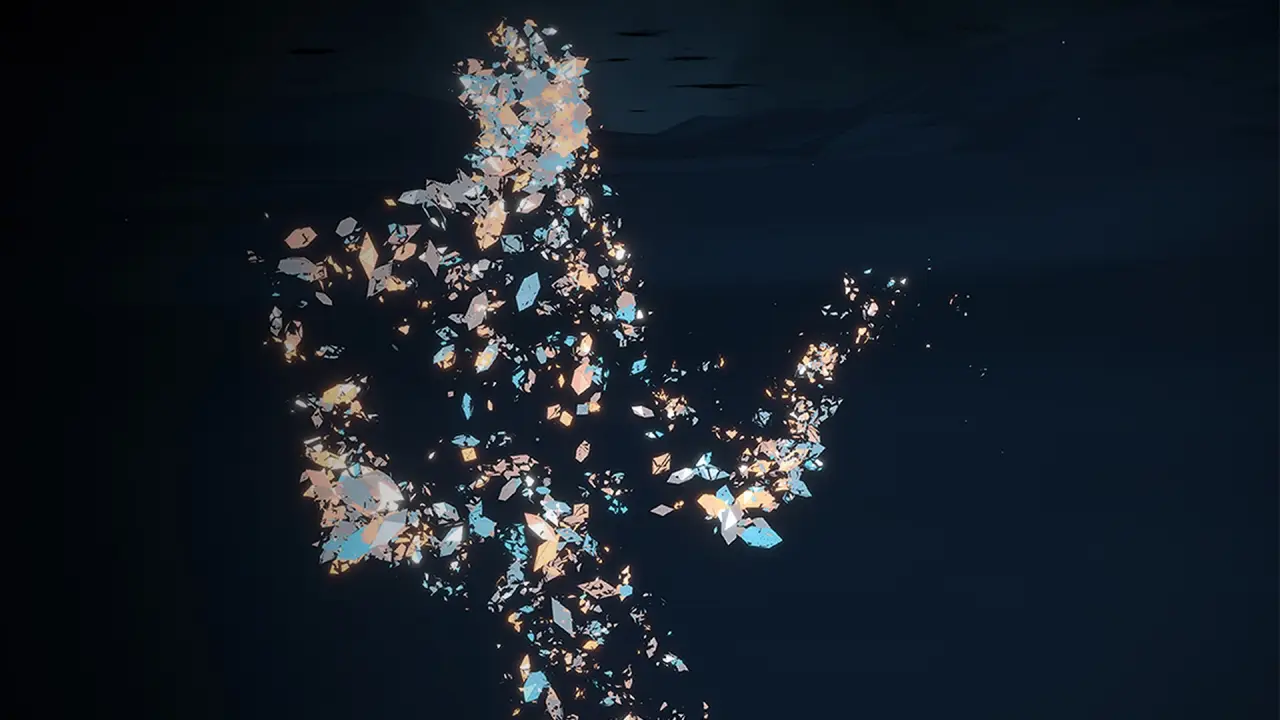Or if your date or encounter just doesn’t deliver what you had hoped from the other person? Could you still enjoy the experience even if it wasn’t magical?
Cover: COLLECTIVE BODY, by Sarah Silverblatt-Buser
As the XR pendulum swings back from cold technology to the infiltration of the human connection, it grapples with the difficulty of the user experience no longer just dependent on the maker’s talent, but also – gasp – on the investment of other people. At this year’s Venice Immersive, the programme is ripe with pieces that call for connection, whether verbally or physically, and as people chatted in the courtyard about what they’d seen and what they’d liked, it was common to hear “it depends on who you’re with…”.
I experienced this firsthand for Fanny Fortage’s HEARTBEAT, a potentially very intimate piece where two people exchange heartbeats and stare at each other. I had a feeling about my 20:20 time slot, that the other ticket holder would be a few spritz’ in and forget to come, cancel or share their ticket. (Because I seem to have that luck. The same thing happened to me for ROAMance at IDFA’s DocLab, when my partner – utterly necessary for the piece – was a no show. Getting stood up in XR still feels pretty crappy, even though it’s likely not personal.) Desperately texting the WhatsApp group – “does anyone out there want to experience HeartBeat? I’m alone!”
Eventually someone showed up with their ticket and we went inside. But soon it was clear she didn’t speak much English, so wasn’t getting the prompts. When the time came to look at each other, she didn’t understand, and looked up, down, everywhere else but at me. I am sitting, following instructions and staring at her, but starting to feel incredibly invasive in my gaze. When she finally met my eyes, I’m not sure if she finally got it, or just felt like she had to match my look. By that point it was clear we weren’t going to “have a moment”. Afterwards, she apologized for not understanding better and maybe missing things, and while normally I would have felt disappointed and cheated that I didn’t have the ideal connection experience, I actually felt it left me with a more realistic reflection of connection – that it’s rare for two people to be on the same page. It also left me contemplating what we risk when we manufacture these connective experiences.
COLLECTIVE BODY doesn’t so much rely on another user, but offers the possibility of connection – even if you don’t take it. The beautiful experience calls you to dance and move in a headset (What freedom I felt to move and groove, thinking I was only in my own world; and how easily a headset makes us forget there are human bodies in charge of the experiences, who can see us even though we can’t see them!), at first only seeing yourself, but then expanding the “circle of play” to include other bodies, which exist as moving point clouds. How much do you feel free to let loose if the others in your circle aren’t? What about the risk of reaching out and accidently touching someone physically? (the horror!) No complaints with the three other dancers in my circle; they were quite expressive, even though we stayed in our spots. I have to admit though, I felt a little jealous when I saw images on Instagram of people dancing together, holding hands. Did our group not go far enough in the connection?
COLLECTIVE BODY is a multi-player experience that counts on, but doesn’t depend, on other users (similar to many of us in real life). Many multi-player experiences aren’t generally about connections, but there is the factor of how much you go through it together. In DARK ROOMS, you share the space with two other amorphous avatars. Before we started, one of the others in my group asked, “Do we need to wait for each other?” What a nice gesture of solidarity. An even nicer one came later when one of them waited for me and gestured to come join them, telling me later he didn’t want me to be left behind. It seems people are way nicer in headsets!
Of course, the piece de resistance of human connection at Venice was ANCESTORS, an interactive experience connecting people through smartphones. There was an excited buzz as we all gathered in the room. My early “warm up” interactions didn’t resonate deeply, and I was worried about the terrible track record I have for partners in XR experiences. But once we got going in the main experience, my “baby-making” partner was excited and open. Jackpot! As we interacted with more and more people, it felt so lovely. We stood in concentric circles, with all of our “ancestors” passing by us, and it was hard not to tear up. The little touches by the Smartphone Orchestra, like leaning out to wave at our “great-great-grandparent”, opened a place of humanity and humour amidst the epic nature of the exercise.
What a great mixer this would be at the beginning of every XR event! I met half as many people in that hour than the rest of my time on the island. Afterwards, we gave each other that smile or head nod of familiarity when we passed each other or made eye contact – we’re connected now, in a way normal networking could never do.
In fact, these experiences remind us that we are all humans; whether we’re the head of an immersive museum or a maker developing their first XR piece, when you share an experience together, it’s like you’ve crossed a slight line of intimacy that marks your connection going forward. It’s a weird thing to think about in such a technology-based medium, but not surprisingly considering we’re all in it together. And word on the street (or island in this case) is that more than one of these “connection” encounters have led to actual relationships. 😉



Leave a Reply
You must be logged in to post a comment.